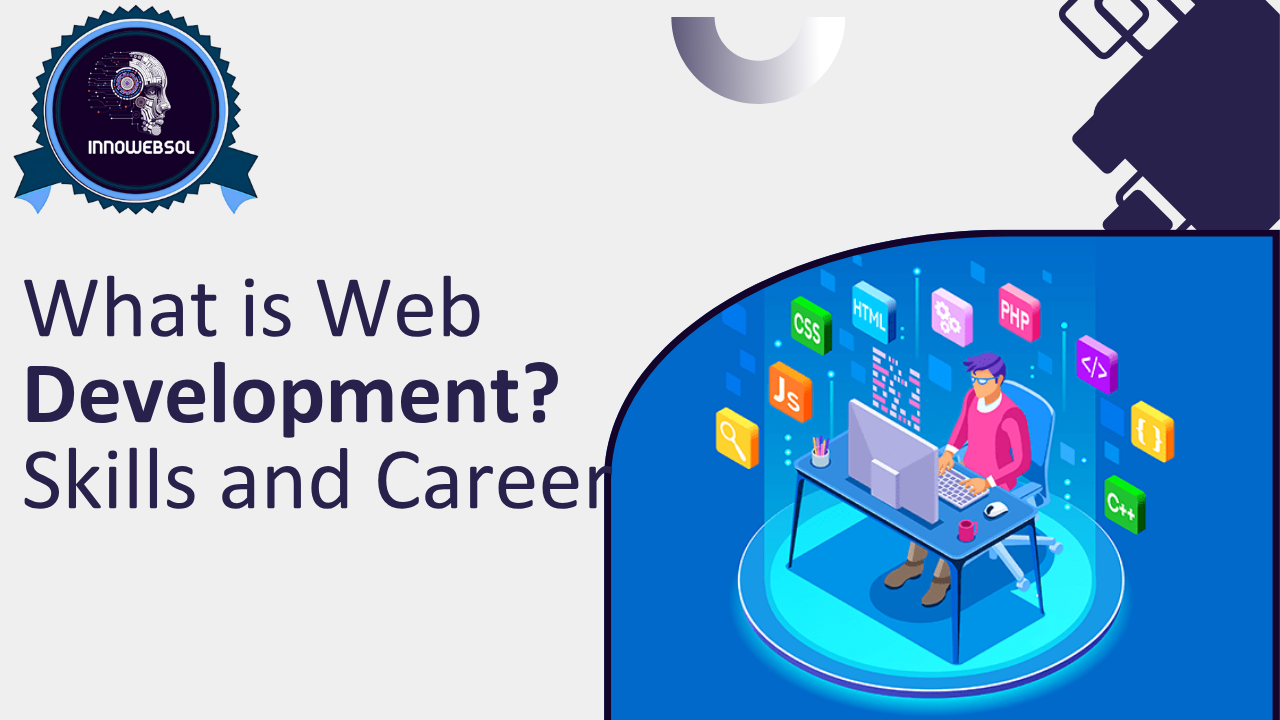In our digital age, one question pops up for businesses, students, and job seekers alike: what is web development? Whether you’re scrolling through an online store, reading an article, or using a web app, web development makes it all possible. It’s the process of building websites, web applications, and online experiences that millions of people rely on daily.
This comprehensive guide will explain what is web development, types of web development, web development services, how to learn web development, and explore the growing world of full stack web development.
What is Web Development?
At its core, web development is the process of creating, building, and maintaining websites or web applications. It involves coding, designing, and configuring the elements users see (front end) and the behind-the-scenes systems that power everything (back end).
People often confuse web development with web design. While web design focuses on the visual layout and aesthetics, web development brings those designs to life through code and functionality. Web developers use programming languages, frameworks, databases, and servers to ensure that websites function smoothly and deliver great user experiences.
Businesses depend on web development for everything from brand presence to e-commerce platforms, customer service portals, blogs, and powerful online applications.

What is Web Development Services?
Understanding what is web development services helps clarify the professional landscape. Web development services refer to the wide range of tasks and solutions offered by developers, agencies, or freelancers to help businesses establish or improve their online presence.
Common web development services include:
Custom website development — Building websites tailored to a business’s unique needs and branding.
Web application development — Creating apps accessible through web browsers, like booking systems or project management tools.
Content management systems (CMS) — Developing websites using platforms like WordPress, Drupal, or Joomla for easier content updates.
E-commerce development — Building online stores with payment systems, product catalogs, and inventory management.
Website maintenance — Keeping websites secure, updated, and running efficiently.
API integration — Connecting websites to other services or databases for seamless functionality.
These services are essential for businesses looking to attract customers, improve user experience, and stay competitive in their industries.
Types of Web Development
Understanding the types of web development helps explain how different roles and technologies contribute to building the modern web. Let’s explore the primary categories:
Front-End Web Development
Front-end development focuses on everything users see and interact with in their browser. It includes designing layouts, colors, typography, animations, and user interfaces.
Front-end developers use languages like:
HTML (Hypertext Markup Language) — Defines the structure of web pages.
CSS (Cascading Style Sheets) — Controls styling, such as colors and layout.
JavaScript — Adds interactivity, animations, and dynamic features.
Modern frameworks like React, Angular, and Vue.js help developers build complex, responsive, and engaging front-end experiences.
Back-End Web Development
Back-end development handles the “server-side” of websites — all the systems that process data, store information, and ensure everything works smoothly behind the scenes.
Back-end developers work with languages and technologies like:
PHP
Python
Ruby
Java
Node.js
Databases such as MySQL, PostgreSQL, or MongoDB store data that back-end systems manage.
For example, when you log into an account or make a purchase online, the back end verifies your information, updates databases, and ensures the front end displays the correct data.
Full Stack Web Development
Full stack web development combines both front-end and back-end skills. Full stack developers can build complete web solutions, from designing user interfaces to managing databases and server logic.
Companies value full stack developers because they:
Understand how all parts of a website work together.
Can quickly troubleshoot issues across the entire web stack.
Are versatile, making them suitable for startups or small teams with diverse needs.
Learning full stack web development provides a broader skill set and increases career opportunities.
How to Learn Web Development
Many people wonder how to learn web development, especially as the field offers excellent career prospects and flexibility. The path depends on your goals, background, and learning style. Here’s a roadmap for beginners:
Learn Basic Web Technologies
Start with the fundamental building blocks:
HTML — Learn how to structure web content.
CSS — Style your pages for visual appeal.
JavaScript — Add interactivity and dynamic behavior.
Plenty of free resources, tutorials, and interactive coding platforms like Codecademy, freeCodeCamp, and W3Schools can help you grasp these basics.
Choose a Specialty
After mastering basics, decide whether to focus on:
Front-end development — Perfect for those who enjoy design and user experience.
Back-end development — Suited for problem-solving and working with data.
Full stack development — Ideal for learning both and becoming a versatile developer.
Explore Frameworks and Libraries
Modern development often relies on frameworks and libraries for efficiency:
React, Angular, Vue.js for front-end development.
Node.js, Django, Ruby on Rails for back-end.
Learning these tools speeds up development and helps you build advanced features.
Build Projects
Nothing beats hands-on practice. Create personal projects, contribute to open-source work, or freelance small websites. Building real-world projects solidifies your skills and helps build a portfolio.
Understand Tools and Workflows
Professional developers use version control systems like Git, debugging tools, and development environments. Familiarize yourself with:
GitHub — To manage and share code.
Command line basics — For running scripts and managing files.
Deployment — To host websites on servers or cloud platforms like AWS, Netlify, or Heroku.
Stay Updated
Web development evolves rapidly. Follow blogs, join communities, and take new courses to keep your skills current. Google’s updates, new frameworks, and industry best practices change frequently.
By following this path, you’ll be well-prepared to start a career in web development, whether as a freelancer, part of an agency, or working in-house for a company.
Benefits of Learning Web Development
Understanding what is web development also means recognizing its benefits. Learning web development offers:
Career flexibility — Work in countless industries or freelance independently.
High demand — Skilled developers are sought after worldwide.
Creativity — Combine problem-solving with design and innovation.
Remote work opportunities — Many web development jobs allow working from anywhere.
Good salaries — Developers often enjoy competitive pay.
These factors make web development a rewarding career choice for tech enthusiasts.
What Skills Do Web Developers Need?
To succeed in web development, certain skills are essential:
Technical Skills:
Proficiency in HTML, CSS, JavaScript
Knowledge of back-end languages if focusing on server-side work
Understanding of databases and data management
Familiarity with responsive design principles
Soft Skills:
Problem-solving ability
Communication skills
Attention to detail
Adaptability to new technologies
These combined skills make web developers effective in creating high-quality, user-friendly websites.

The Role of Web Development in Business
Modern businesses cannot function without a strong online presence. Here’s how web development contributes to business success:
Brand Visibility — Websites serve as the digital face of a company.
Customer Engagement — Interactive features improve user experience.
E-commerce — Online stores drive sales and reach broader markets.
Data Collection — Web applications help businesses gather valuable customer insights.
Credibility — Professional websites build trust and authority.
Understanding what is web development services helps businesses choose the right solutions to stay competitive and connect with customers.
Future of Web Development
Web development is continuously evolving. Trends shaping the future include:
Progressive Web Apps (PWAs) — Offering app-like experiences in browsers.
Voice Search Optimization — As more users search using voice assistants.
Artificial Intelligence — Chatbots and personalized content are becoming standard.
WebAssembly — Allowing complex applications to run faster in browsers.
Low-Code/No-Code Platforms — Making it easier for non-developers to create websites.
These innovations mean that web developers must stay adaptable and eager to learn.
Final Thoughts on What is Web Development
Understanding what is web development unlocks the door to one of the most exciting and impactful fields in today’s digital world. From crafting visually appealing websites to building complex applications that power businesses, web development is both an art and a science.
Whether you’re exploring what is web development services for your business, deciding which types of web development to learn, or aspiring to become a full-stack web developer, there’s endless opportunity in this dynamic field. Dive in, keep learning, and you’ll find a rewarding path filled with creativity, innovation, and the chance to shape the future of the internet.

